Viva
出生 : 1938-08-23, Syracuse, New York, USA
略歴
Viva, born Janet Susan Mary Hoffmann, is an American actress, writer and a former Warhol superstar.

1967 (made in 2015) presents newly found and digitized silent 16mm films from the 1960s in the form of a four-part composition portraying a cast of artists, writers, musicians and actors who made up the bohemian underground of that time. The film recasts the essence of a scene whose participants have since been idealized as celebrities or else forgotten.

Reviewing home videos, filmmaker Paula Gaitán constructs a curious narrative about her youth while talking to her children. A filmic note in the form of an essay based on material made in Super 8. "Of which there are no limits, and full of affection and imagination", says the author.

Drama - - Demian Gabriel, Nicole LaLiberte, Viva

Reel-to-reel video by Michel Auder, recorded 1971, edited 2009. Features Auder's former wife Viva.
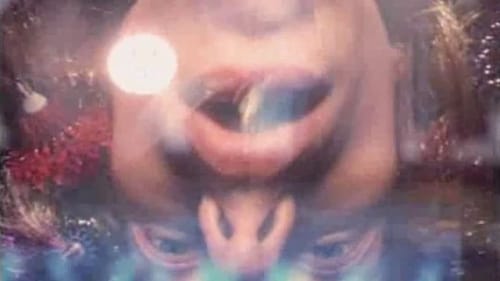
Herself
Over the course of more than fifteen years, Clémenti films a series of intimate diaries, starting from daily encounters. In La deuxième femme, we see Bulle Ogier and Viva, Nico and Tina Aumont, Philippe Garrel and Udo Kier, a performance by Béjart, a piece by Marc’O, concerts by Bob Marley and Patti Smith (not always recognisable)... It’s like a maelstrom of psychedelic images that are passed through a particle accelerator.

The Feature does not reconcile fact and fiction; instead, it blurs the definitions seemingly represented by the film’s two clearly demarcated registers: that of the archival footage and that of the new, theatrical material. In his guise as “Michel Auder,” living a fulsome and extravagant life, replete with beautiful women and a rock-cut pool overlooking Los Angeles, the art world is revealed as a sham, and his character exhibits a repulsive narcissism. And yet, when caught in quiet moments, something poignant emerges—a glimmer of truth that rebels against the entire endeavour. Or maybe, that’s what makes The Feature.
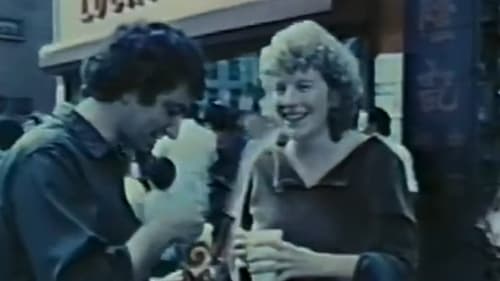
Self
Filmmaker Jonas Mekas films 160 underground film people over four decades.

Herself
A look into the many lives of Christa Päffgen, otherwise known as Nico; from cutie German mädchen to the first of the supermodels, to glamorous diva of the Velvet Underground, to cult item, junkie and hag. Many faces for the same woman, whom, you realize, just couldn't bring herself to care enough to live.

Mrs. Cooper
60年代のアメリカ北東部。交通事故で大火傷を負い、人目を避けて生活する元教師マクラウドのもとに、孤独な少年チャックが現れる。二人はいつしか心を通わせるようになるが……。メル・ギブソンが監督・主演に挑んだ人間ドラマ。

Herself (archive footage)
Documentary on Andy Warhol's cinema of the sixties, made for Channel 4 in association with The Factory, MOMA and the Whitney Museum of Art and in collaboration with Simon Field.

Herself
The first major profile of the American Pop Art cult leader after his death in 1987 covers the whole of his life and work through interviews, clips from his films, and conversations with his family and superstar friends. Andy Warhol, the son of poor Czech immigrants, grew up in the industrial slums of Pittsburgh while dreaming of Hollywood stars. He went on to become a star himself.

Self
Shirley Clarke's frenetic documentary about multi-talented musician Ornette Coleman.

Woman on TV
テキサス州の町パリをめざす男。彼は失踪した妻を探し求めていた。男は、4年間置き去りにしていた幼い息子との間にも親子の情を取り戻す。そして、やがて巡り会った妻に、彼は愛するがゆえの苦悩を打ち明ける……。

Kate
On location in Portugal, a film crew runs out of film while making their own version of Roger Corman's The Day the World Ended (1956) . The producer is nowhere to be found and director Munro attempts to find him in hopes of being able to finish the film.
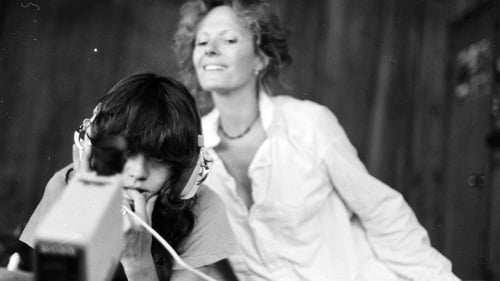
Self
The film is a series of interviews with various well-known film actresses, including Jenny Agutter, Maria Schneider, and Jane Fonda. The title, which is borrowed from a 1958 film with the same name by Marc Allegret, refers to the sense the actresses have of what is expected of them by the film industry.

This TV documentary was made for the UK BBC TV "Arena" strand in 1981, and shows some of the colourful residents of and people connected with the New York Chelsea Hotel. Some highlights include Andy Warhol and William Burroughs having dinner; Quentin Crisp pontificating in a blue rinse hairdo on his balcony and Nico forgetting what she is talking about halfway through a dour rendition of "Chelsea Girls". A number of lesser-known characters also appear, linked together by a tour guide walking around the building and some sub-Shining sequences of a child cycling round the landings on a rickety tricycle. (IMDb)
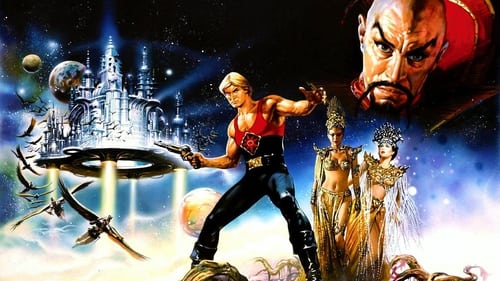
Cytherian Girl
アメリカンSFコミックが原作のアドベンチャー。地球に頻発する怪現象は惑星モンゴからの放射能のせいだと突き止めた科学者は、フットボールの選手フラッシュを送り込み、皇帝ミンと対決させる。
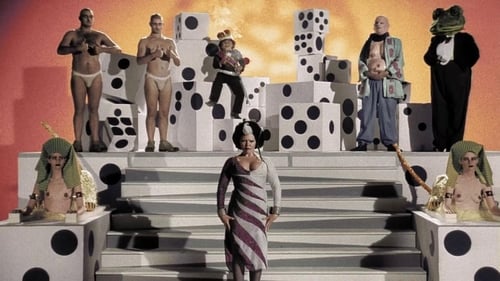
Ex-Queen
A mysterious door in the basement of the Hercules house leads to the Sixth Dimension by way of a gigantic set of intestine. When Frenchy slips through the door, King Fausto falls in love with her. The jealous Queen Doris takes Frenchy prisoner, and it is up to the Hercules family and friend Squeezit Henderson to rescue her.

"Chronicles of the Present Times" - An experimental trilogy comprising 'Visa De Censure No.X', 'Livre De Famille' and 'Anima Mundi'. New Old flows together footage from more than a decade of his wandering between scenes, sets, and drugs, an accelerated world tour through various iterations of the counterculture.

Michel Auder’s Jesus – in which underground NY artists and Warhol superstars openly discuss their beliefs. Jesus – which premiered as a screening at The Kitchen in 1980 – mixes documentary elements such as footage of evangelical TV programs, books, cartoons, paintings, and other Jesus related imagery – with performances including Taylor Mead as a priest in the West Village and Florence Lambert playing a crucified Jesus. Also, intercut throughout are surprisingly candid interviews with Auder’s friends, family, and people he approaches on New York City streets about their faith and relationship to the world’s most famous person. Among those interviewed are Diego Cortez, Jackie Curtis, Gerard Malanga, Alice Neel (Andrew Neel’s grandmother), Larry Rivers, and Viva.

In 1969 Michel Auder began a series of video diaries that chronicled the art scene in downtown New York. In Chelsea Girls with Andy Warhol, Auder captures revealing moments in Warhol's public and private life: the opening of the 1970 Whitney Museum retrospective, a party held at John Lennon and Yoko Ono's home, a heated telephone conversation between Warhol, Viva and Brigid Berlin, and an illuminating interview conducted with Larry Rivers, the grandfather of Pop Art, following the publication of The Philosophy of Andy Warhol in 1975. The issue of money is a consistent topic of conversation with Viva, who after departing the Factory in 1969 sent Warhol a series of threatening letters demanding money.

Diana - Vogue editor
Warhol superstar and icon of sixties bohemia Edie Sedgwick delivers her final performance in this semiautobiographical look at the price of fame. Fiction and documentary—including snippets from Sedgwick’s own audio dairies—mingle in a freewheeling portrait of Susan Superstar (Sedgwick), a New York celebrity on a drug-fueled downward slide that mirrors Sedgwick’s own self-destructive spiral. Released after her death from an overdose of barbiturates, CIAO! MANHATTAN endures as a testament to Sedgwick’s unique magnetism and as a haunting elegy for the counterculture she embodied.
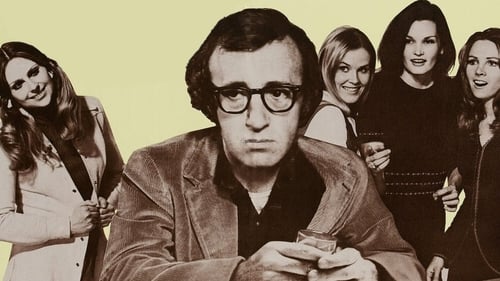
Jennifer
A neurotic film critic obsessed with the movie Casablanca (1942) attempts to get over his wife leaving him by dating again with the help of a married couple and his illusory idol, Humphrey Bogart.
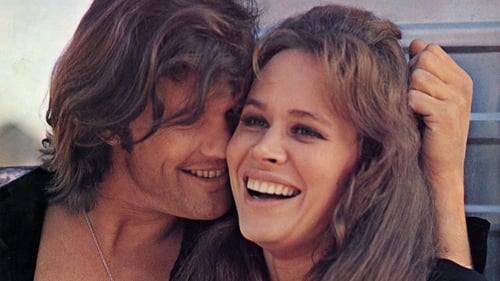
Merna
A down on his luck former drug dealer is forced by a corrupt LAPD policeman to sell 100 kilos of confiscated marijuana in one weekend.

Self
With a rambling, unstructured style that echoes Andy Warhol’s own approach to filmmaking, this documentary profiles his career, showing him to be a brilliant manipulator, dedicated voyeur and person of astute commercial judgment.

The Chronicles capture the natural and cultural beauty of Morocco from its ancient walled villages to its nomadic caravans. Music comes from everywhere. Edited almost thirty years apart, the two Chronicles together are a study in Auder's approach to his memories. The footage is all from the same trip that was a family vacation. Considering Chronicles/Morocco, 1971 a construct of emotional convenience unfaithful to memory, Auder decided to supplement the first version with a fuller account. The two works feature almost entirely different footage. There are, however, sections where one can see where Auder has omitted Viva. The star of the 1971 version is a young Moroccan Adonis who appoints himself tour-guide for a group of Europeans including Michel. The camera follows his charming antics as he flaunts his nubile body and rather blunt but effective skills as a hunter.
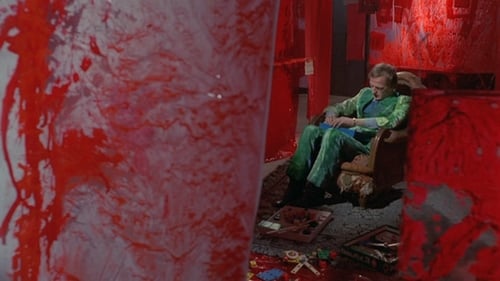
Countess Bathory
A surreal and disturbing distillation of Western Civilization, Necropolis is the unhinged vision of Italian director Franco Brocani. Pierre Clémenti is Attila the Hun, naked and on horseback, while Warhol superstar Viva is a drunken and abusive Countess Bathory. A pop pastiche for the psychedelic generation, Necropolis features a soundtrack by Gavin Bryars.

Self
Documentary portrait of Henri Langlois, co-founder of the Cinémathèque Française.
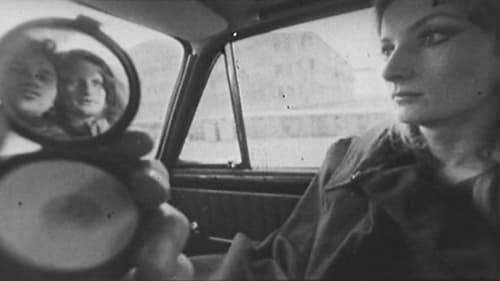
Cleopatra
Cleopatra situates itself in the same relationship to Hollywood as the Warhol/Morrisey films of the period. It corresponds to Joseph Mankiewicz's 1963 Cleopatra, starring Elizabeth Taylor and Richard Burton which Auder's cast watched and used as the starting point for scene by scene improvisation Auder drew his cast from Warhol's ensemble – including not only Viva and Louis Waldon, but also Taylor Mead, Ondine, Andrea Feldman, Gerard Melanga and others.

"The question is, it is either going to be a stoned age or a new Stone Age" - Louis Brigante

Warhol Superstars Viva and Louis Waldon are the main subjects of Auder’s first film with synched sound, Keeping Busy (1969), which was billed as “a film novel about what they did to keep busy.”
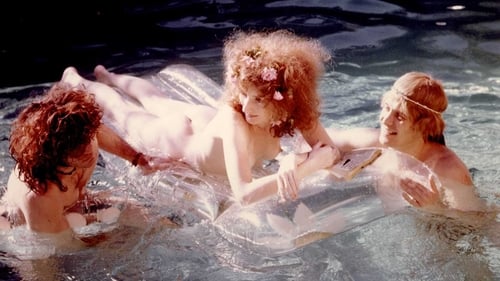
Viva
Three actors in Hollywood live and love together. A director comes from New York to make a movie about actors and Hollywood.

Herself
Viva and Louis Waldon spend an idyllic afternoon together in an apartment in New York City.
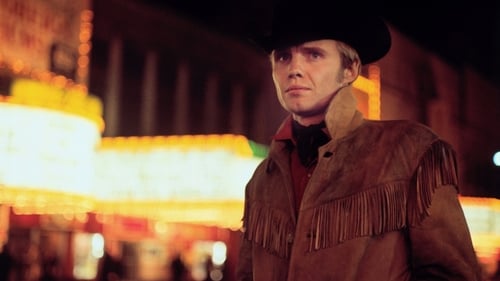
Gretel McAlbertson
テキサスの片田舎からニューヨークへやって来たカウボーイ姿の青年ジョーは、自身の肉体と美貌を武器に金持ち女性の相手をして富と名声を得ようと考えていた。しかし最初の客に騙され、逆に金を巻き上げられてしまう。そんな彼の前に、足の不自由な詐欺師ラッツォが現れる。2人はともに底辺から這い上がろうともがくうちに奇妙な友情で結ばれていくが、ラッツォは深刻な病に侵されていた。
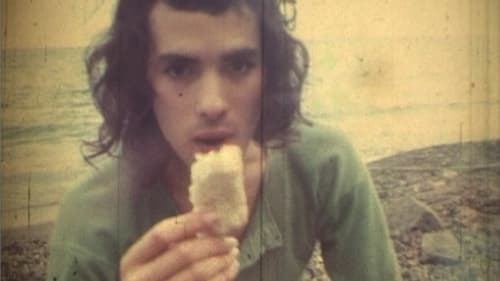
Positano is an island of the Amalfi Coast that Neptune would have, according to legend, created for the love of a nymph. Perched on the rocks of the island, the house of Frédéric Pardo and Tina Aumont became in 1968 a meeting place for the underground community. Pierre Clémenti stays there for a while and makes images of dazzling sensuality. Beyond Pierre Clémenti's intimate love of these faces and bodies often naked in this Mediterranean landscape, the film reveals the moving beauty of a utopia where living together could still be achieved in a territory of sharing and permanent creation. Flow of perceptions of consciousness, visual impressions, physical impregnations, the work of Pierre Clémenti is an ode to sensuality and "life-cinema".

Trapianto heralds the end of utopia, the death of that underground, but is also the best prologue in Necropolis, which is not by chance found alive. It 's a film that establishes the passage of rolling between two friends, and Brocani Schifano, shared the same passions, and from living the cinema as a challenge urgent and vital, suspended between dream and action.

Girl with the Hourglass
A political filmmaker finds himself in Long Island for a weekend where he finds himself entangled with a high-living, jet set crowd. At first it is exciting, but soon he finds himself disillusioned by their shallowness.

Ramona D'Alvarez
Five lonesome cowboys get all hot and bothered at home on the range after confronting Ramona Alvarez and her nurse.

Susan Hoffman
Viva and Taylor Mead are a married couple renting an extra beach-house to a group of surfers sent to them by a Mr. Morrissey of La Jolla Realty. Their daughter, Ingrid Superstar, is pregnant and on the hunt for a husband. Mr. Mead, who is gay, tries to pawn her off to one of the surfers. Meanwhile, Viva wants a divorce from her boy-crazy hubby, who wants a surfer of his own. Tom, a surfer, is inveigled by Mr. Mead to urinate on him. In a close-up, Mr. Mead receives Tom's offering ecstatically, after which he comments, "I'm a real surfer now."

Girl in Bed
Ondine is a gay man attempting to re-adjust his sexuality via various encounters with different women. After trying his luck with three women, Ondine becomes a background character in a sequence in which a group of Latin American men, calling themselves The Bananas, engage in a food fight. Ondine then engages in a wrestling match with Joe Dallesandro, who is married to Brigid Berlin.

“The film flickers through a millennium of culture as it would appear to a tourist. It is an intense film, yet there is an incredible wealth of information surprisingly accessible. Aside from the exciting experience itself, the breakneck history lesson is a reminder that the mind can move in lightning steps: The plodding way information is typically presented is an insult to mental capability.” - Bartlett Naylor

Between the French La Nouvelle Vague and the Italian Neorealismo, Europe had been undergoing a continuous cinema transformation since the 1950s, while the ailing American studio system groaned under its own weight and inertia. New Hollywood had arrived with Bonnie and Clyde in 1967, and already by 1968 it was changing how Hollywood thought and acted. The student film scene was getting ready to explode, and it knew it.

Girl in Bed
Photographed entirely in color, Four Stars was projected in its complete length of nearly 25 hours (allowing for projection overlap of the 35-minute reels) only once, at the Film-Makers' Cinematheque in the basement of the now-demolished Wurlitzer Building at 125 West 41st Street in New York City. The imagery in the film is dense, wearying and beautiful, but ultimately hard to decipher, for, in contrast to his earlier, and more famous film Chelsea Girls, made in 1966, Warhol directed that two reels be screened simultaneously on top of each other on a single screen, rather than side-by-side.

The Waitress
At a New York City restaurant, the patrons are men, nude but for a G-string, waited on by one woman, also clad in a G-string and a G-bestringed waiter.

Girl on couch
Joe Spencer, a member of a motorcycle gang, is taking a shower. After his bout with personal hygiene, Joe encounters Andy Warhol's "superstars," who engage him in conversation. The superstars crack jokes he doesn't understand and continually correct his poor pronunciation in an attempt to deflate his machismo. In response to these provocations, Joe becomes more obscene and more boasting, but ultimately, he cannot compete with the put-downs that are part of the put-on performances of the Warhol superstars, who prevail over him in the end.

"Tub Girls" features Warhol superstar Viva lying in a bathtub with different people of both sexes, including Brigid Berlin (as Brigid Polk), who appeared fully clothed in the tub.





































